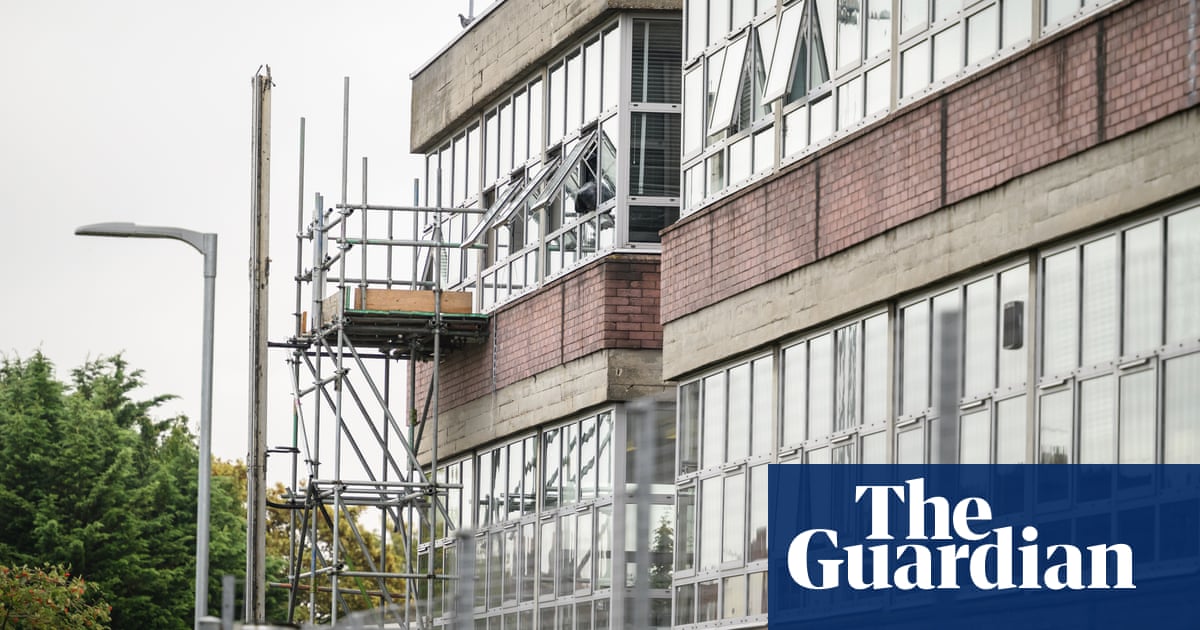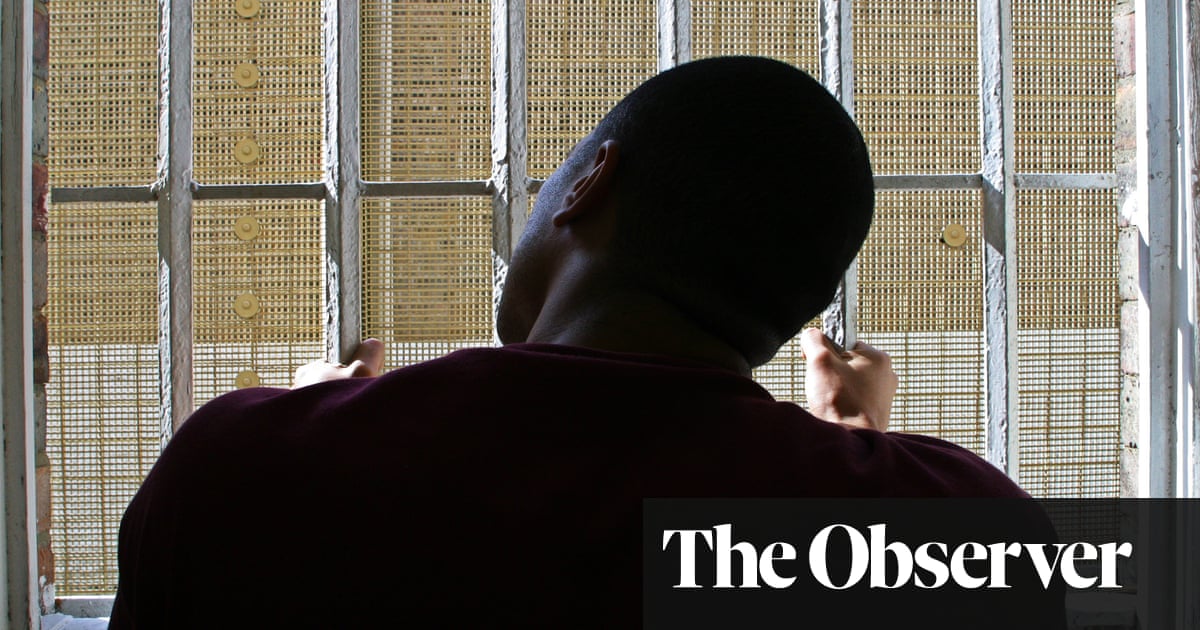
It is a sunny morning outside HMP Wandsworth and tourists are pointing at a food truck waiting to go through the portcullis-style gate. “That might have been the one he hid under,” says one, as they discuss how 21-year-old terror suspect Daniel Khalife allegedly managed to escape the Victorian jail this month clinging to the bottom of a delivery vehicle.
What the tourists don’t clock are the men who walk out of the gate carrying prison-issue sports bags, blinking into the sunlight as they taste freedom for the first time in weeks, months, years.
Most have no one waiting for them, but one – Darren, a relaxed twentysomething in a bucket hat, a plastic crucifix hung round his neck – is met by Sam, a cheery man in shorts and Crocs contracted by the local council to meet and mentor prisoners on their release.
Sam’s goal is simple, yet difficult to achieve: stop Darren from going back inside. More than two in five adult prisoners in England and Wales (42%) are re-convicted of another offence within one year of release, the starkest sign that the prison system doesn’t work.
Darren was in Wandsworth for only two weeks, recalled for a short, sharp punishment after breaking the rules of his probation after his last release. He is sanguine about life in rat-infested cells that were built in 1851. Vandalism is rife: last year contractors were repairing up to 300 smashed toilet seats in Wandsworth every month. Pigeons fly around on the wings, their droppings splattered across the walkways.
The jail is at 170% capacity, holding 1,617 prisoners – 667 more men than it was designed for. It is also seriously understaffed. On the day Khalife allegedly escaped, 80 staff had not shown up for work, equating to 40% of the workforce.
The gap between the standards the prison inspectorate says inmates should expect and the reality is enormous, most notably the notion that they should be allowed a minimum of 10 hours out of their cell every day.
According to Darren: “Some days we didn’t come out of our cells at all.” Including, unsurprisingly, on 6 September, when Khalife went missing from the prison kitchens, putting the jail in lockdown.
News of Khalife’s alleged escape propelled prisons to the top of the news agenda, with much hand-wringing over chronic overcrowding and understaffing. As of Friday 22 September there were 87,685 people in prison in England and Wales, double the number 30 years ago.
Sixty-five per cent of jails are overcrowded, according to figures released in August, collectively holding almost more 8,500 prisoners than the Prison Service has “good, decent” accommodation for. They are watched over by 10% fewer staff than in 2010, when the prison population was slightly lower.
Yet most of us have no idea what is happening behind prison walls. Officers are banned from talking to the media; so are prisoners, except in vanishingly rare circumstances. Journalists are almost never allowed inside jails, and only then in highly controlled visits. That’s why anonymity was granted to an unusually large number of staff and inmates who spoke to the Guardian for this piece.
Charlie Taylor, the chief inspector of prisons, says that 10% of the prisons in England and Wales are barely fit for purpose and would be shut down in an ideal world.
Top of the list is Wandsworth. This time last year, Kieran was banged up in the south-west London prison to start a three-year sentence. Like Darren, he shared a cell that was originally designed for one. Next to the bunk bed was the toilet, “literally in the middle of the cell”, partially shielded by a curtain. He had to beg to be let out for a shower, once spending four days in his cell without a wash. It wasn’t a punishment. “They said they were short-staffed.”
Officers sometimes took “hours” to respond when prisoners rang their cell bells, says Kieran. “Bad things have happened … There was a suicide and it could have been prevented very easily.” A man on his wing asked to be moved in to share a cell with his friend, who was struggling with his mental health. “The officers kept stringing him along saying ‘Yeah yeah’ but they didn’t do it, and he killed himself.”
On Christmas Day 2021, two prisoners died in Wandsworth in what independent monitors called a “double tragedy”. (Inquests have yet to determine whether the deaths were self-inflicted).
Sometimes penny-pinching is to blame for the poor conditions. Last year Judith Feline quit as governor of HMP Maidstone, a Victorian jail in Kent, after assessing that the Ministry of Justice did not give her the budget or autonomy to run a “decent” prison. She had to fight for the basics, ashamed about the “embarrassingly poor” showers and lack of curtains.
Prison curtains are very simple – but Maidstone didn’t have any. “I couldn’t believe it when I was asked by my finance person: ‘Do we really need them?’” says Feline. “The short answer was: ‘Yes’ In summer, the sun comes up really early, and you wouldn’t want to sleep without curtains. It’s about decency. And for me, that was the most important thing. I don’t think we can expect prisoners to leave prison as better people if we don’t treat them humanely when we keep them in custody.”
The problems are not confined to the crumbling Victorian jails, according to one long-term prisoner currently held in HMP Berwyn, the £250m “mega prison” in north Wales that opened in February 2017. Holding up to 2,000 people in three giant wings, it is the second-biggest prison in the UK by prisoner population and as of last month was just six prisoners short of being full.
Paul moved in the year after it opened and was initially “incredulous” at the facilities on offer, which were “second to none”. He has his own modern cell, with a shower as well as a toilet, plus a phone and laptop (not internet-enabled), which he can use to order meals and buy items from the prison shop, or complete courses. There is an “excellent” education centre, a good gym and a range of jobs, including at the on-site CD recycling plant.
Apart from perennial problems with the heating and plumbing, Berwyn worked well at the start, when it was two-thirds empty, Paul says. Now it is basically full, with nowhere near enough staff to run it properly, he says. That means much more time “behind the door”, in prison parlance.
He is particularly scathing about Berwyn’s offender management unit (OMU), which is supposed to rehabilitate prisoners ready for their release. “I’ve never seen such a bad OMU. They’ve got the same number of staff now as they did when there were only 700 men,” he claims.
People are being released without carrying out the necessary courses to learn how to change their behaviour, he says. “We’ve got the highest reoffending rate in Europe. And there’s a reason for that. It’s because the system is so badly run.”
He adds: “How will people feel knowing that they are getting people coming out of prison into their communities who have committed very serious crimes, who are not being rehabilitated, not being re-skilled or re-trained and who have come out more criminalised than they were when they came away?”
The Guardian has been told that Berwyn needs 360 frontline “band 3” prison officers when full, but currently has just over half that: about 190. (The Ministry of Justice disputes these figures but said it did not publish data on staffing levels). It is similar elsewhere. HMP Woodhill in Milton Keynes was put into special measures this month after inspectors found that only half of the required number of band 3 officers were available for duty.
Berwyn’s comparative luxury is a double-edged sword, says Paul. “It means they can keep us all behind our doors for far longer. During Covid, I had nine days straight behind the door. The level of mental health suffering went through the roof.”
He reels off a list of the “horrors” he is increasingly witnessing: “Self-harm, cutting, people putting nooses around their necks, setting fires.” Drugs are a “massive” problem in Berwyn, he says, particularly spice, a synthetic cannabinoid.
He thinks most drugs come in via corrupt officers, who are not routinely scanned on arrival in any prison, unlike prisoners, who have to sit on a body orifice security scanner chair.
Some drugs arrive via the post, often via solicitors’ letters the prison are not supposed to open. Spice can be painted on the pages of a book or letter and smoked, says Paul, which is one reason prisons now give out laptops and encourage the use of an email a prisoner service instead of the post.
At a prison in the north of England, Louise, a veteran prison officer, says drones are still used to deliver contraband to prisoners, along with more low-tech “throw-overs”. She estimates 10-20% of prisoners have illegal mobile phones, some sold to them by staff.
“Some of them are so tiny they keep them up their backsides, which obviously we can’t search,” she says. The more brazen inmates broadcast their antics on YouTube and TikTok, some gathering large online followings as incarcerated influencers.
Louise is starting to fall out of love with the job she has done for over 20 years. In the not-too-distant past, women were protected from violence by a code of honour. “So even if one got a bit bolshie with you, there would be two or three other [prisoners] going: ‘Leave miss alone’, ‘Don’t talk to miss like that.’ Whereas the gloves are off now, they don’t give a toss whether you’re male or female.”
Sometimes, prisoners deliberately target diligent officers to “get them away for a few weeks”, says Louise. She gives a grim example, about how drug debts can be settled inside. “You might get somebody who will agree to throw a pot of faeces at an officer in return for 10 Lynx shower gels,” she says. The officer will then immediately be sent home and probably won’t reappear for a few weeks, and the culprit has prison currency – shower gel – to start paying off their tab. “In prison,” says Louise, “everything is currency.”
Many people may prefer not to know what goes on behind the barbed wire-topped walls of our jails. Why should we care?
Taylor offers two compelling answers: simple “human decency” – and rehabilitation. “Almost all prisoners are going to come out someday,” he says. “And when they do come out, what do you want them to be? Do you want them to be getting a job, working hard, looking after their families? Or do you want them continuing to cause mayhem in their communities, going back to substance misuse, failing to see their families, their children? Because if we want the former, then we have to do something for those people while they’re in prison.”
A Prison Service spokesperson said: “We are doing more than ever to deliver safe and secure prisons that rehabilitate offenders, cut crime and protect the public. Assaults are nearly a third lower than in 2019 as a result of these efforts and our £100m investment in tough security measures – including X-ray body scanners – is stopping the weapons, drugs and phones that fuel violence behind bars.
“At the same time, we are pressing ahead with the biggest expansion of prison places in over a century, recruiting up to 5,000 more prison officers and creating a prisoner education service so offenders get the support and skills they need to put crime behind them.”
Some names have been changed.












